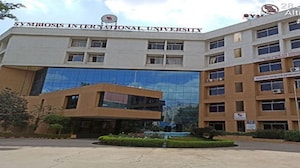University of Leeds and IIT Kharagpur work together to jointly supervise PhD programs
The deal would make it easier for students and teachers to collaborate on joint research projects, exchange student ideas, and work toward UN sustainable development goals.

IIT Kharagpur (IITKGP) and the University of Leeds (UoL) joined forces to boost research and student programs. They signed an agreement to work together on PhD programs in areas like civil engineering, biology, and transportation. This partnership aims to build a long-lasting connection between the universities and recognise India's growing importance in the world.
IIT Kharagpur joined a celebration in Delhi for the 25th anniversary of the University of Leeds on June 28th. This event was a chance to mark the long friendship between the two universities and they signed an agreement to work together on PhD programs. This is great timing for IIT Kharagpur because professors from there just visited the University of Leeds in June. The two universities have been working together on many projects already, like research and student exchanges.
“To further strengthen the collaboration, the two Institutes now have the External Joint Supervision Agreement, which will immensely benefit doctoral students, wherein they will receive mentorship and guidance from faculty members of both the Institutes. The initial themes of collaboration that have been identified are Clean Energy for All, Sustainable Transport, Resilient Infrastructure, Healthcare and Well-Being, Chemicals and Waster, and Water and Sanitation which also address some of the Sustainable Development Goals of the United Nations,” she added.
IIT Kharagpur (IITKGP) is working on deepening its ties with the University of Leeds. They're discussing a funding agreement to allow student and faculty exchange. IITKGP might also join a new centre on sustainable development and attend a conference to connect with other international partners.
Two top universities, Leeds and IIT Kharagpur, are teaming up to change how research and learning happen in their countries. By working together, these amazing schools will bring together different ideas and the latest tools. This will spark creativity and lead to exciting discoveries for students and researchers. They'll also tackle big problems facing the world, like health, transportation, and construction, by combining their expertise. This partnership is a great example for other universities to follow, making the world's learning even stronger.
The new collaboration aligns with the strategic goals of both organizations, which are to expand their global networks and support diverse research. The University of Leeds and IIT Kharagpur are certain that their collaboration will yield innovative discoveries and have a lasting impact on the community.
Read More
- #IIT Kharagpur
- # IIT GATE
- # IIT Kharagpur 2025
- # IIT
- # UoL
- # 25th anniversary
Unlock yourpotential!
Let us know your preference and our team will guide you toward your academic journey. Stay tuned for personalized advice.
FAQ's
Students will get guidance from professors at both universities for their PhD programs in Civil Engineering, Biology, and Transportation.
Clean Energy for All, Sustainable Transport, Resilient Infrastructure, Healthcare and Well-Being, Chemicals and Waste, and Water and Sanitation.
The universities are discussing a funding agreement to allow student and faculty exchange.
By working together, researchers will hopefully make new discoveries to improve health, transportation, construction, and other areas.
This collaboration shows how universities can combine their strengths to improve education and research on a global scale.
Latest News

IIM Sambalpur will provide small business entrepreneurs with verbal language mentoring

Pre-DelEd Results for Rajasthan BSTC 2024

CM Sawant confirms IIT Goa Campus is to be established in Rivona Village

10 kids from Bilaspur, Himachal Pradesh, depart on an educational visit to ISRO

IIM Mumbai has joined the university affiliation program of CFA Institute
Photos and Videos
















COMMENTS (0)